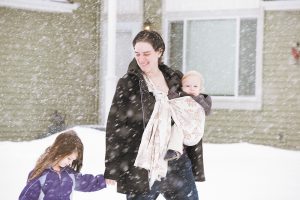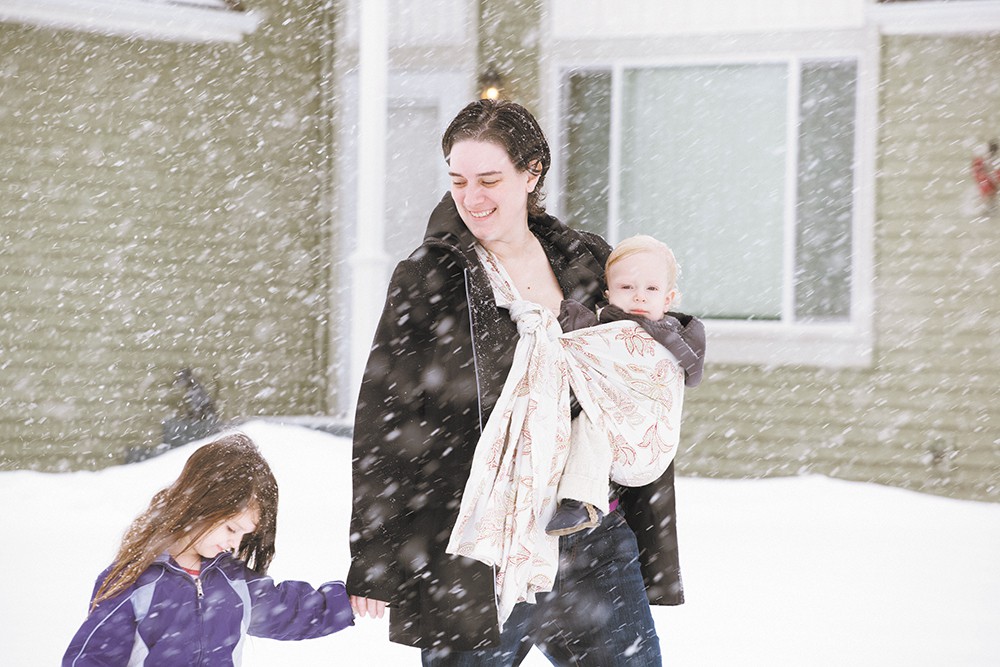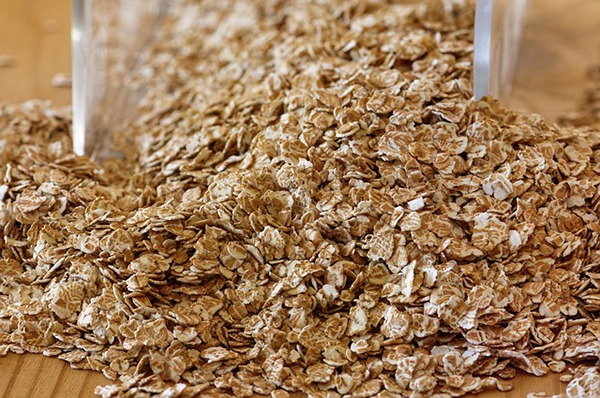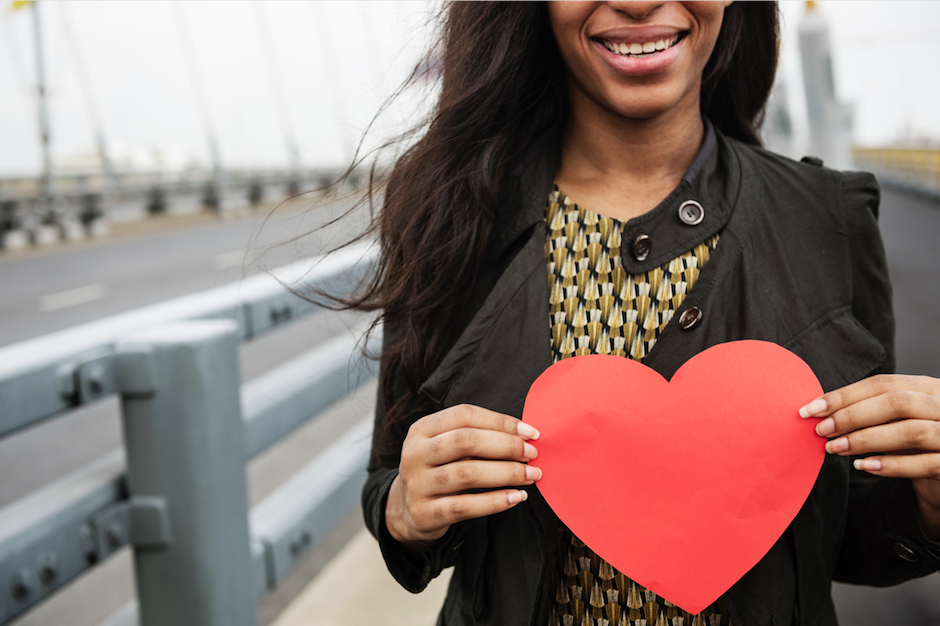Kids’ safety on Halloween

It’s a dark night, and big groups of frantically excited kids in masks and costumes are darting along sidewalks, bouncing off the curbs.
What could possibly go wrong?
Kids, forget about vampires. You need to be scared about cars.
Halloween is a lot of fun, but it is also a lot riskier than other days of the year, too.
According to the child-advocacy group Safe Kids Worldwide, twice as many kids are killed walking around on Halloween as on any other day of the year. The combination of October darkness and kids out and about — sometimes unattended — is a pretty potent witches’ brew of problems.
ut there are precautions parents can take to make sure their offspring stay safe.
The Seattle Police Department recommends on its website that kids take flashlights out trick-or-treating, and that both parents and kids remember how tough it is for drivers to see at night — and especially, at dusk. And, of course, kids should be told not to weave between parked cars to get across the street.
The candy will wait. They can cross at the corner.
Costumes themselves can cause safety issues, too.
Masks “really obscure the peripheral vision,” said Dr. Alex Hamling, a pediatrician at Pacific Medical Centers in Bothell, adding that there are “just so many more children on street corners and crossing the streets at inappropriate areas and times.
“Car drivers just don’t have the same wherewithal to see them.”
If drivers do happen to be out on Halloween, SPD reminds them to take it slow. Hamling also advises that drivers do some planning ahead of time if they’ll be out that night.
“Know what time trick-or-treating is happening in your area,” he said, noting that early on and late in the evening, you see isolated, much smaller groups, which can catch drivers off guard and lead to accidents.
Safe Kids Worldwide adds the sage advice to keep the iPhone down and your eyes peeled for kids. Your apps can wait, too.
The most important part of any costume may just be the part that lights up. Don’t have that? Get it, says Safe Kids Worldwide. A flashlight, glow sticks, glow jewelry or reflective tape will work. If the costume’s color isn’t light or bright, having reflectors or a light source is key, so pay attention, especially if your kids will be Batman, a witch or a vampire — dressed in all black for trick-or-treating.
Though everyone knows fire is a hazard, but most people don’t think about jack-o’-lanterns on the porch as an issue.
But on a crowded stoop, with crowds of kid zombies angling for M & M’s and jostling for the best spot, a pumpkin with a lit candle inside can turn dangerous fast. Long wigs and draping costumes on kids need to be well away from any candlelit jack-o’-lanterns. Move pumpkins away from the spots where trick-or-treaters convene, says SPD, or use a battery-operated light or glow stick inside.
The yard around the house should be kid-proofed for visitors on Saturday, too, according to the SPD safety guidelines. (For instance, the scary manual hedge clippers should probably come off the porch now.) Turning the outside lights on helps with safety a lot, and you’ll be less likely to find a trail of fallen toddlers and irate injured parents on your front walk, too.
Big plastic bags should be kept away from the little ones who are out trolling for candy, according to the CDC. They’re a suffocation hazard, so never leave a little one alone with a plastic bag, which could end up on a face or over a head. (Yes, stores still sell the plastic Halloween sacks for trick-or-treaters, even in bagless Seattle.) Paper bags or plastic pumpkin containers can make decent alternatives.
“This is the one time of the year that you break the rule ‘don’t take candy from strangers,’” said Hamling. He emphasized that kids need clear ground rules that they should never enter a stranger’s house or car. And they should never eat candy that has been unwrapped. “Just to be on the safe side,” he said.
Parents also need to make sure kids wait to snack on the candy until they’re at home and an adult has checked their take. Hard candy is considered a choking hazard for kids 7 and under, and little trinkets that aren’t candy can end up in mouths of kids under 3. (A plastic spider ring is a treasure, but not when it’s mistaken as candy and swallowed.)
For kids with food allergies, it’s important for parents to be especially vigilant to make sure there’s no free-for-all. Hamling recommends that a grown-up always be present with children who have serious food allergies and carry an epinephrine pen if that has been prescribed.
The Teal Pumpkin Project, sponsored by the group Food Allergy Research & Education has encouraged people to display pumpkins painted teal blue at houses where the residents are giving out prizes and trinkets in place of food treats, which is especially helpful to families with food-allergic kids.
Finally, make sure costumes are safe so there aren’t incidents with sharp edges — say, a first-grade gladiator or third-grade ninja falling on a pointy plastic sword, or a toy gun being mistaken as the real thing, says SPD.
Staying visible in traffic and crossing safely are the major issues out there on Halloween.
If kids manage those, their biggest risk is probably their parents getting hold of their candy stash before it’s Nov. 1.
Babywearing benefits
Using a baby carrier leaves your hands free and makes for happier, healthier babies.
By Chelsea Bannach, Inlander Magazine interviewing Dr. Hamling
For Grace Kimball, babywearing is a powerful parenting tool.

Kimball, of Coeur d’Alene, has a 2-year-old daughter, Kimber, who has special needs, and a 6-month-old son, Callahan. Her husband is out of town for work much of the time, and babywearing — the practice of holding a baby against one’s body using a sling or other carrier — allows her to keep up with the demands of caring for two small children. She wears her children every day, comforting them while still accomplishing housework or running errands.
“It’s a very positive thing that you can do for your child, and it deserves more awareness,” Kimball says.
Babywearing, a centuries-old practice, is the norm in many cultures around the world; while U.S. parents often use devices such as strollers and bucket car seats instead, babywearing appears to be on the rise here, and research shows it it can provide numerous benefits.
A group of pediatric providers are working on forming a section on babywearing for the American Academy of Pediatrics to craft guidelines on babywearing. Meanwhile, babywearing support groups are cropping up around the U.S. — including the Inland Northwest — bringing babywearers together and helping caregivers navigate the world of wearing.
Kimball’s daughter was recently diagnosed with autism, and wearing provides comfort when she gets overwhelmed, Kimball says. Wearing her son allows him to nap and nurse on the go, leaving her hands free to tend to her daughter.
“He goes in the carrier and he has all his needs met, his mommy right there, and he’s just along for the ride,” she says. “It really, really saves me while going from appointment to appointment.”
She says that babywearing helps her family continue to enjoy an active lifestyle: “I don’t want having kids to stop people from doing anything. If anything, it has encouraged my husband and I to get outdoors more.”
The benefits of babywearing go beyond convenience. Medical professionals agree that loving touch and interaction with a caregiver helps infants thrive, and babywearing is one way to promote physical, social and emotional development.
“Hugs, kisses, spending time talking with them, looking at them, all types of touch and closeness can help promote bonding and development,” says author and parenting expert Tanya Altmann, MD, FAAP (Fellow of the American Academy of Pediatrics). “Babywearing is definitely an easy way to help facilitate closeness with your baby.”
Evidence shows babywearing is associated with reduced crying and colic — welcome news for parents. One study found babywearing mothers were more responsive to their babies’ vocalizations and that those babies formed secure attachments.
“There are a lot of advantages that come with babywearing,” Altmann says, adding that it’s also important for babies to get some floor time. “I think it’s something every parent should try.”
Touch can help a newborn regulate physiologically. Benefits of babywearing begin with skin-to-skin contact immediately after birth for normal, stable babies, says neonatologist Raylene M. Phillips, MD, FAAP. Babies born prematurely who end up in the Neonatal Intensive Care Unit have increased needs for skin-to-skin contact for physiologic stability, improved temperature control, increased breastfeeding initiation and duration, and more mature sleep cycles, which directly support optimal brain development and improved parental-infant bonding.
Babywearing “is not well known and it’s not well publicized, so that’s why we want to bring attention to it,” Phillips says.
When a mother holds her baby close, oxytocin levels are increased, aiding in bonding. That closeness also prompts the release of prolactin, the hormone needed for lactation “so that you actually end up producing more milk,” says Polly Gannon, an international board-certified lactation consultant. Babies who are worn also may also spit up less, easing acid reflux, because they are in an upright position.
Alex Hamling, MD, FAAP, says the section on babywearing would develop guidelines for pediatricians and other practitioners, promote research, disseminate best practices and shared knowledge, and create patient-friendly handouts on babywearing. The group of pediatric providers have submitted a proposal for the creation of the section that they hope will be voted on within the next six months.
Hamling says there are lower rates of developmental hip dysplasia in countries where babywearing is more common, and one mission of the planned AAP section on babywearing will be to facilitate more research in that area. It also promotes neural development due to the wearer’s movements and reduces positional plagiocephaly, or “flat head syndrome,” he says.
Hamling, who wears his own 18-month-old daughter, says he is passionate about babywearing “both personally and professionally.”
“It’s been a really great way for me to connect with my daughter at a young age,” he says. “I think it’s just a great way parents can recognize cues quicker in their child.”
Babywearing can be done as long as mutually enjoyed — even into toddlerhood and beyond.
There are many styles of carriers parents can choose from, including ring slings, soft-structure or buckle carriers, woven wraps, stretchy wraps, pouch slings, mei teis and more. Prices can vary drastically, with new carriers starting as low as about $30.
Two groups, Babywearing International of the Inland Northwest and Spokane Babywearing, have meetups to help parents find a carrier that’s right for them and get a safe and comfortable fit. BWI of the Inland Northwest has a lending library for parents to check out different types of carriers.
“The best thing to do is go to a meeting if you can, because you can touch and feel and see all the different types of carriers that are available, and really get a good idea of what is going to work best for you,” says Jessica Hrehor, a local babywearing educator. “It depends on what you need, what you want and your personal preferences.”
Hrehor, who has demonstrated a proficiency with many types of carriers to earn her title, says that babies have a strong need to be close to their caregivers. Babywearing is one way to for babies to bond with moms, dads, grandparents or anyone else involved in a child’s care.
“The best way to foster independence is to meet their needs for attachment from early on,” she says.
BABYWEARING TIPS
Tight: The carrier should be tight enough to hold the baby snugly to your body. Slumping can hinder the baby’s ability to breathe and cause back pain for the wearer.
In view at all times: The baby’s face should always be in view.
Close enough to kiss: The baby’s head should be close enough to your chin that you can easily kiss her head.
Keep chin off the chest: Ensure that there is always space between your baby’s chin and chest, so breathing is not restricted.
Supported back: A well-fitted carrier should support the baby’s neck and back. Ideally, the baby should be held with his or her knees higher than their bottom in a “M” position, with the carrier supporting them knee to knee; the knee-to-knee support isn’t necessary for older babies and toddlers.6
Recipe: To-Go Baked Oatmeal
5 Ways to Keep Your Heart Healthy This Summer
 Heart disease is still the leading cause of death in the US, and women especially tend to underestimate how susceptible they are to the disease. Let’s make the gorgeous weather, delicious summer foods and fun activities work for your heart!
Heart disease is still the leading cause of death in the US, and women especially tend to underestimate how susceptible they are to the disease. Let’s make the gorgeous weather, delicious summer foods and fun activities work for your heart!
Our favorite tips just for you:
- Have fun with exercise!
It’s easier to embrace daily exercise when you look forward to it. Giving your heart a gentle workout doesn’t have to be trudging on a treadmill, looking at a wall in the gym. It can be any physical activity you enjoy. If you like walking, find a new path to explore in your neighborhood or a flat nature trail you haven’t tried yet.Do you like to garden? An hour of digging and planting can burn up to 272 calories for a 150-pound person.Give yourself credit for daily chores. Even activities such as household cleaning, sweeping a walkway or doing laundry can count as heart-healthy exercise.
- Sleuth out hidden sugars and embrace the sweet fruits of summer.
How does sugar affect heart health? The American Heart Association reports that consuming 17-21 percent of calories as sugar gives people a 38 percent increased risk for heart disease. Secret sugars are everywhere in your kitchen.Keep an eye out for ingredients like high-fructose corn syrup, corn sweetener, molasses, cane sugar, honey and sugar molecules ending in “ose” such as dextrose, sucrose and maltose. The big culprits include spaghetti sauce, barbecue sauce, grocery store side dishes like coleslaw and macaroni salads—and cocktail mixers, a summertime favorite.Once you’ve identified which foods have added sugars, you can begin trying to cut back. Delicious, ripe fruits of summer and fresh-made juice are an easy way to avoid added sugar. And when baking, consider halving the sugar added to recipe; you might not even notice!
- Find ways to de-stress.
Stress is natural in moderate levels and something that most people experience. However, high levels or long periods of stress can have negative effects on heart health. So it’s important to find time in your daily routine to check in on stress and look for ways to reduce it.The world’s easiest stress-reliever is to get enough sleep! Activities like meditation, yoga or taking a walk instantly help. If those aren’t for you, try calling a friend, spending time with a pet or writing in a journal to relieve stress. - Get regular checkups.
Early summer is a great time to get a checkup because it gives you a baseline for improvement. It’s no one’s favorite activity, but regular checkups are a crucial part of maintaining heart health.Heart-health screenings look at blood pressure, cholesterol, weight, body mass index and other measurements that help paint a picture of the condition of your heart.Seeing your doctor regularly can help you catch early warning signs so you can make lifestyle adjustments that improve heart health.
- Easy, healthy summer meals.
Meals that are low in saturated fat and low in sugar reduce the risk of heart disease—and summer is an incredibly easy time to accomplish this tip! Consider vegetable kabobs on the barbecue, crisp green vegetables and salads. Eat a kaleidoscope of food colors for the best health: purple beets, red tomatoes, green broccoli, yellow peppers. The whole family benefits from this one!
Have fun this summer and help keep your heart healthy at the same time by keeping these tips in mind!






